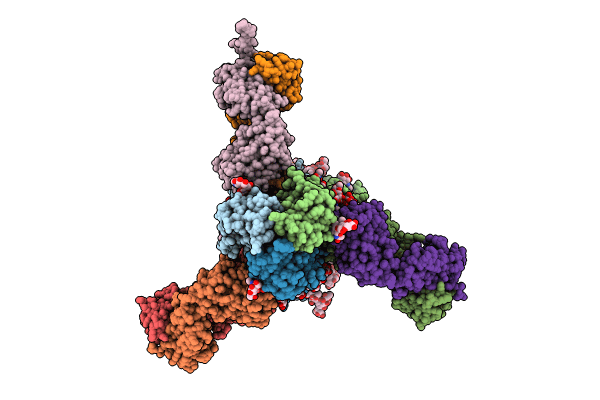
Deposition Date
2023-11-06
Release Date
2024-05-08
Last Version Date
2024-10-16
Entry Detail
PDB ID:
8UWA
Keywords:
Title:
VH1-18 QxxV class antibody 09-1B12 bound to A/Perth/16/2009 H3N2 hemagglutinin
Biological Source:
Source Organism:
Homo sapiens (Taxon ID: 9606)
Influenza A virus (A/Perth/16/2009(H3N2)) (Taxon ID: 654811)
Influenza A virus (A/Perth/16/2009(H3N2)) (Taxon ID: 654811)
Host Organism:
Method Details:
Experimental Method:
Resolution:
4.02 Å
R-Value Free:
0.25
R-Value Work:
0.22
R-Value Observed:
0.23
Space Group:
P 31 2 1


